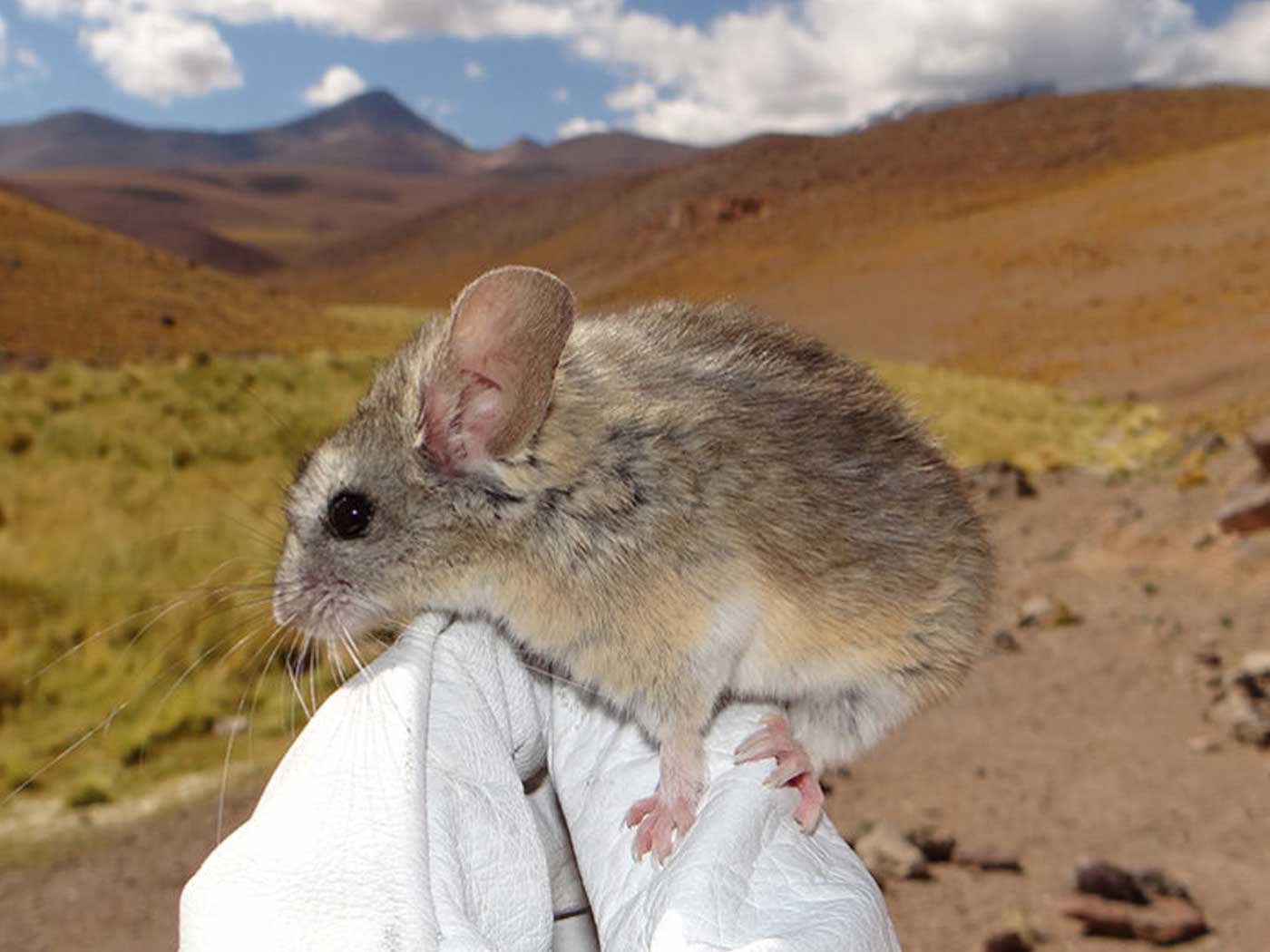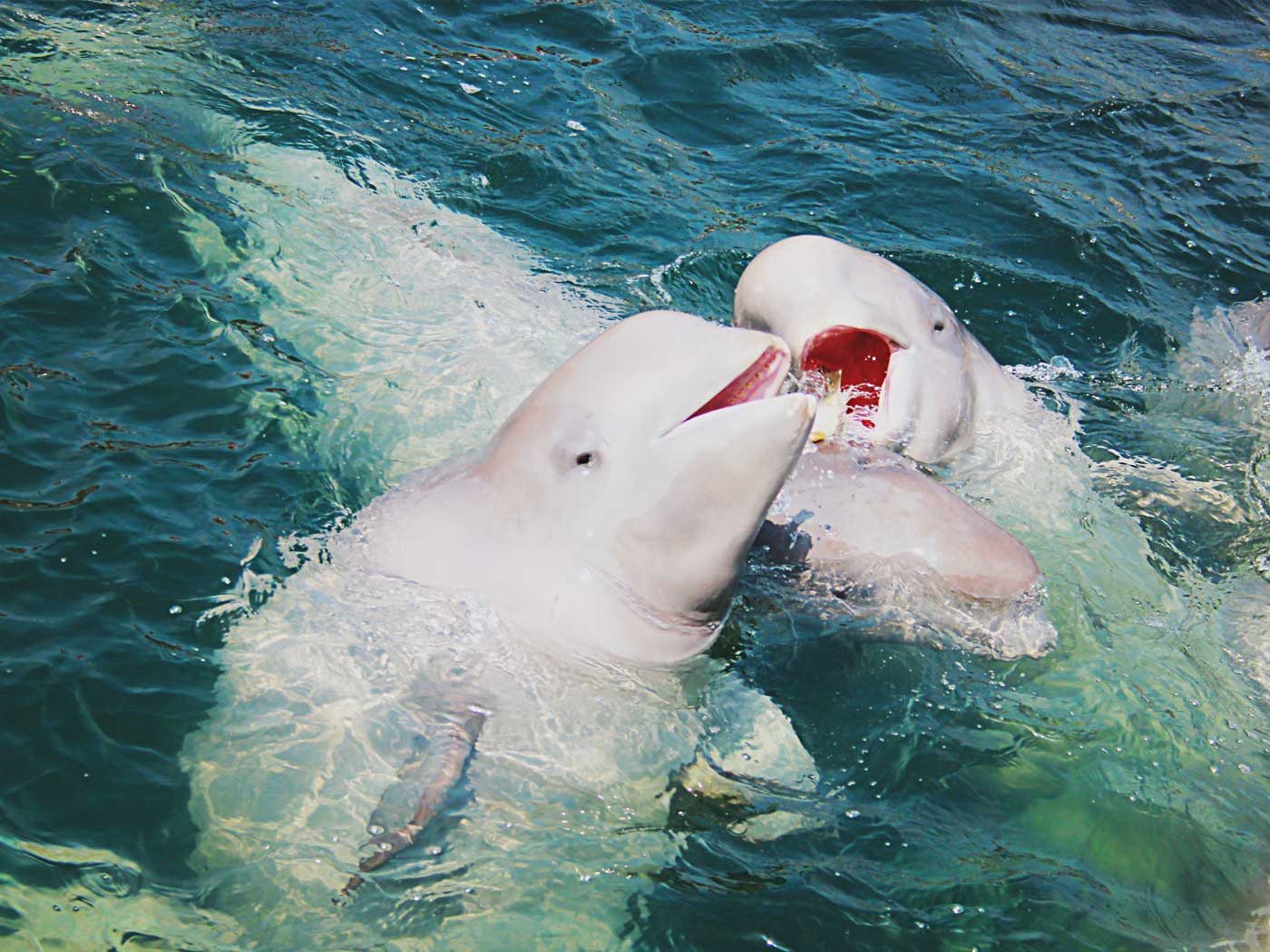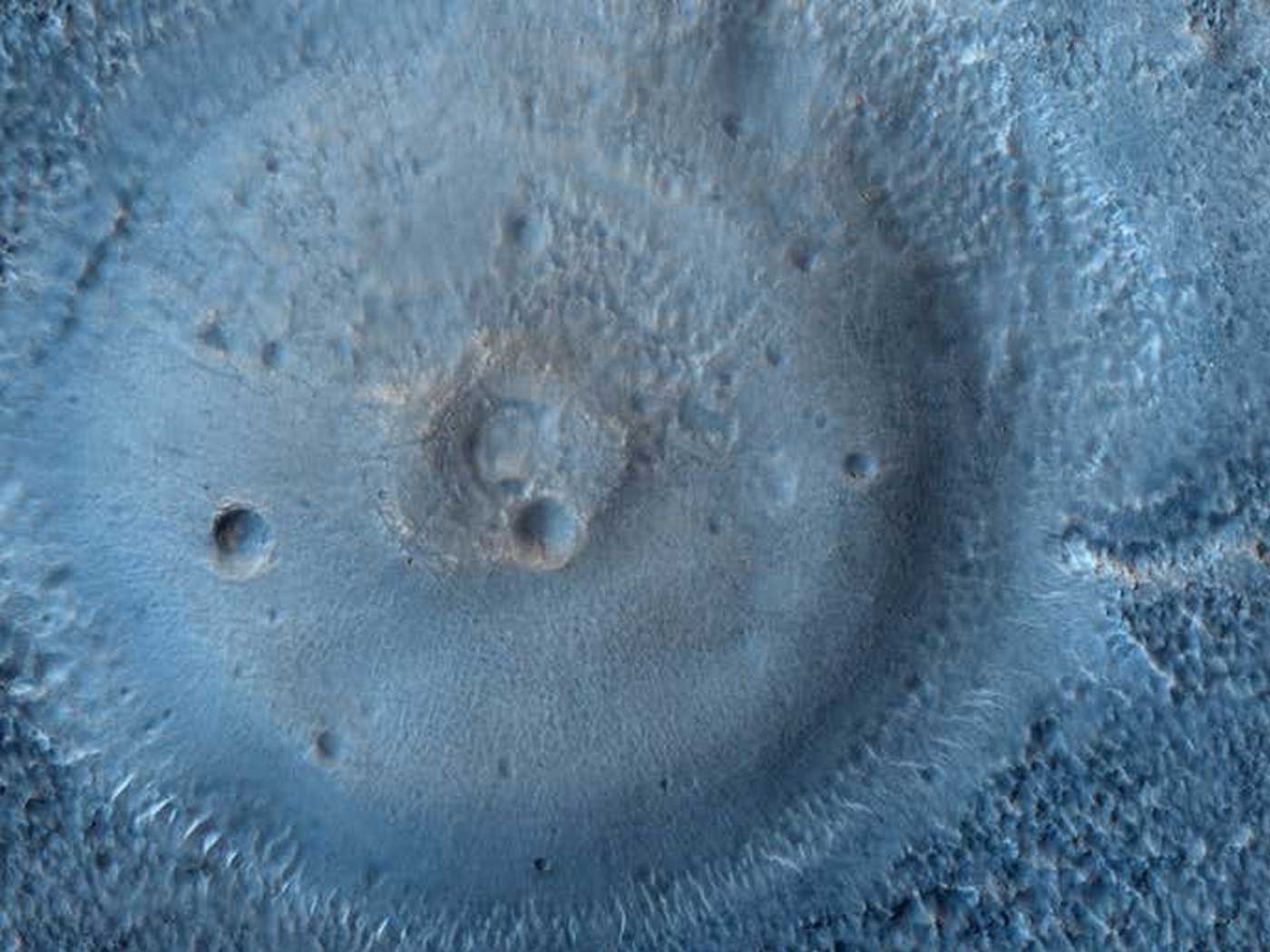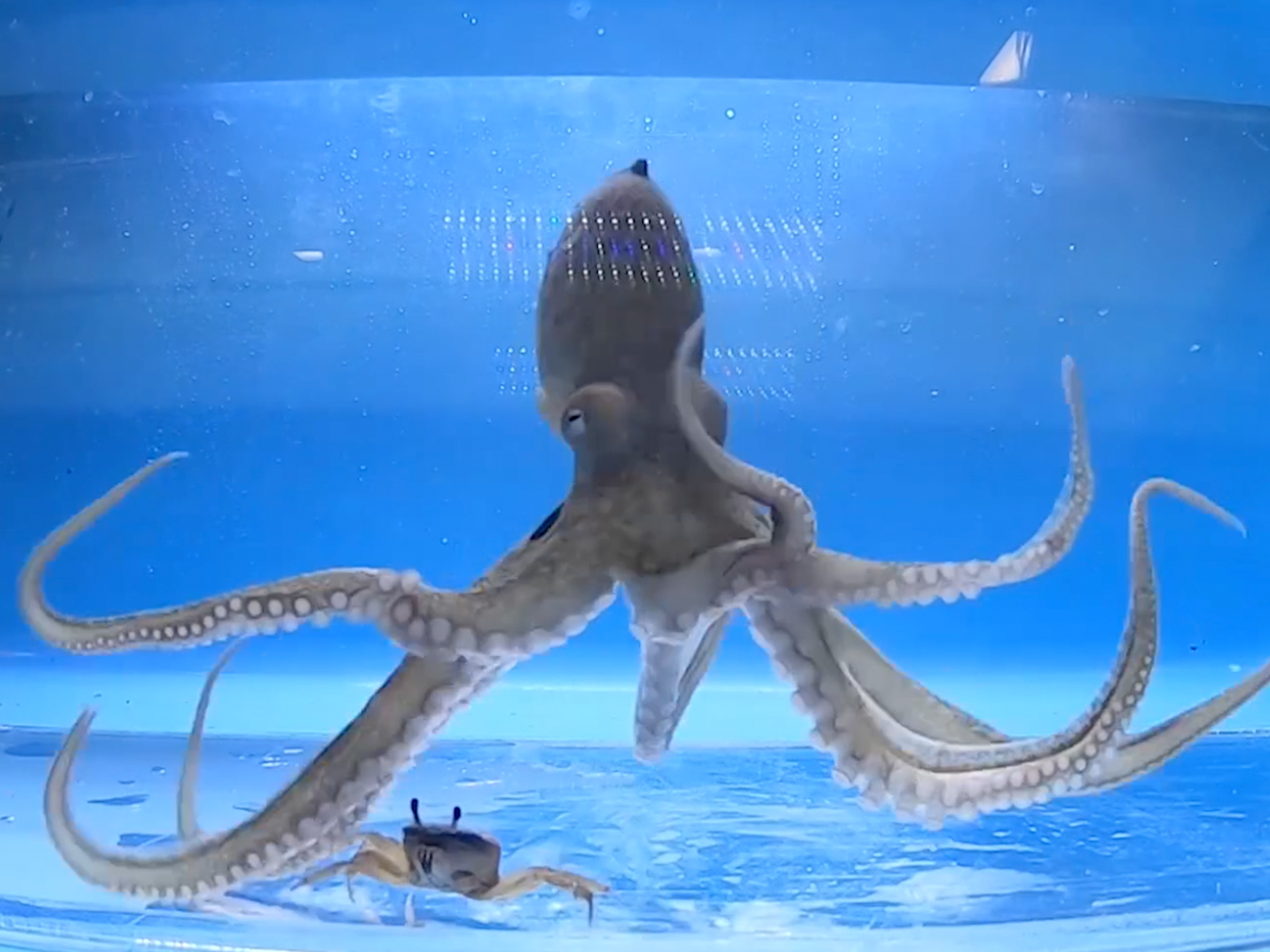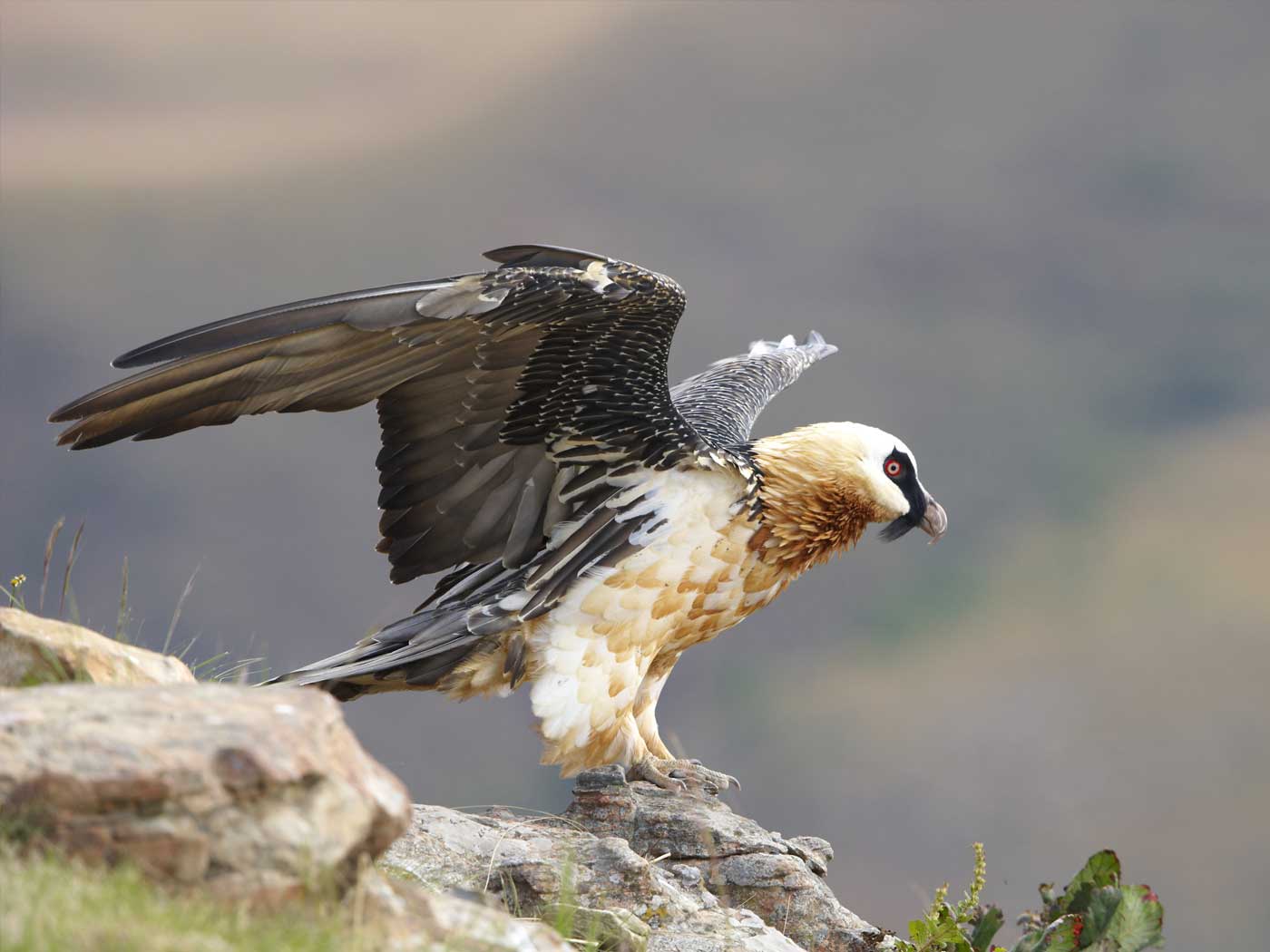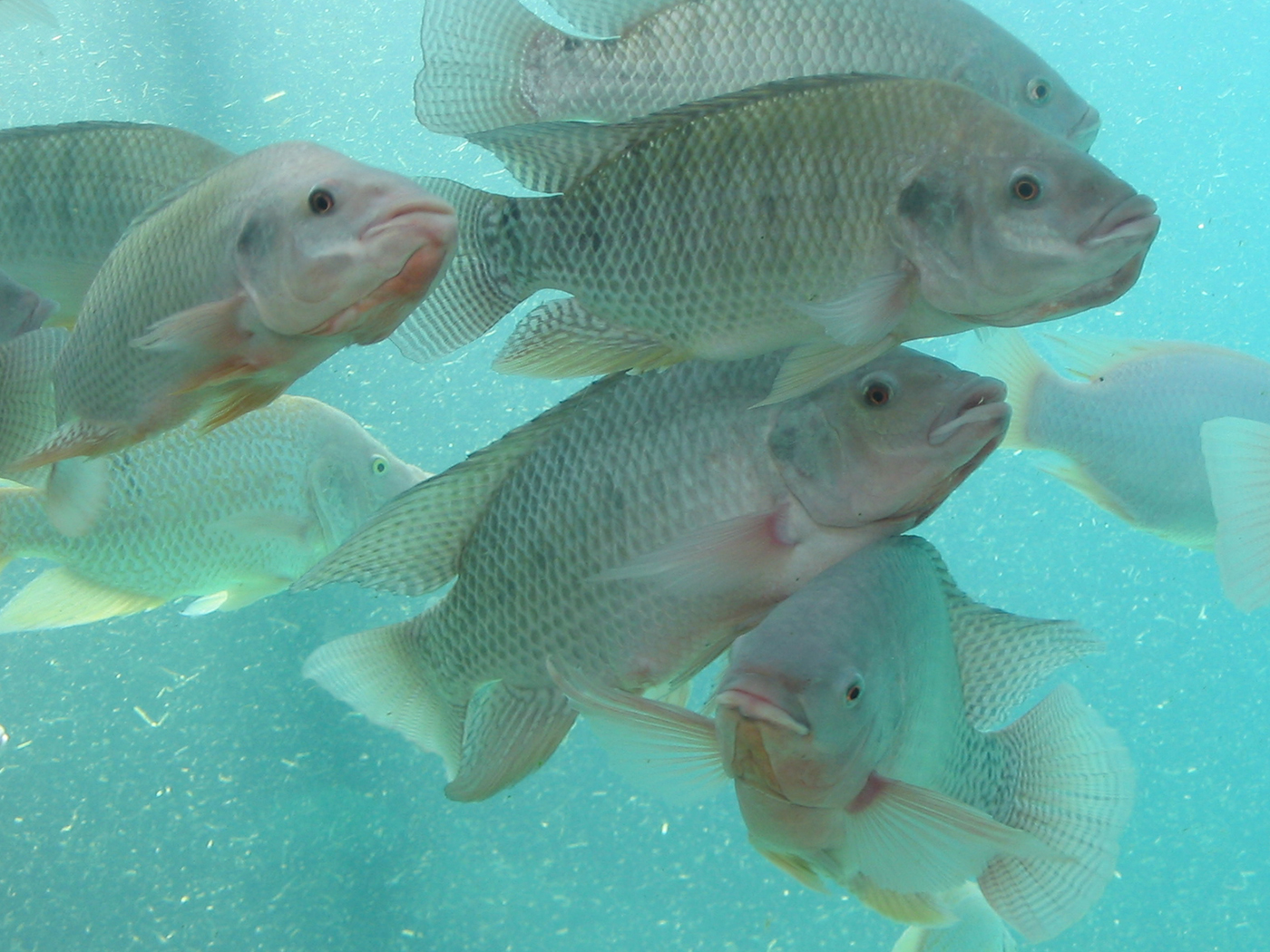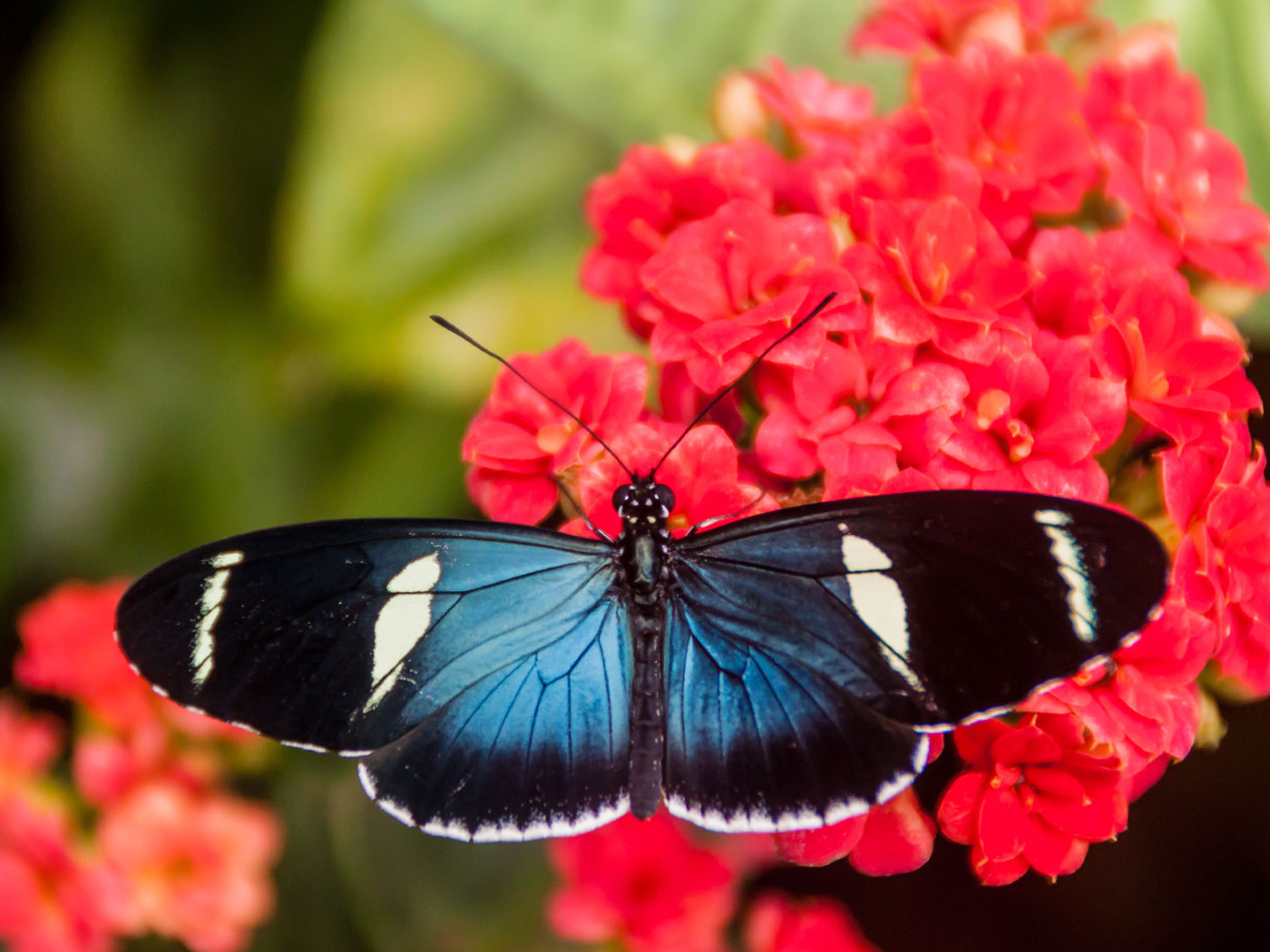The platypus is perhaps the most evolution-defying creature on Earth. It’s not enough that it’s a mammal that lays eggs, has a bill like a duck, tail like a beaver, dense fur like an otter, webbed feet for swimming, hunts with its eyes closed underwater using electroreception, and wields venomous spurs, but now we can add “glows in the dark” to the long list of mind-boggling traits.1
Biofluorescence is a glow-in-the-dark phenomenon in which short wavelengths of light are absorbed and longer wavelengths are re-emitted based on the specific bio-physical properties of hair, skin, scales, or feathers. Biofluorescence has been documented in a wide range of fish, reptiles, amphibians, and birds.2-7 Among mammals, biofluorescence of the fur when exposed to ultraviolet light has been previously demonstrated in several nocturnal taxa including marsupial opossums and placental flying squirrels.8-9 In this new research paper from Mammalia, scientists have documented the fluorescence of the fur coat of the platypus (Ornithorhynchus anatinus) under ultraviolet light. That makes this the first report of biofluorescence in a monotreme mammal.
The researchers analyzed three different platypus specimens in two different museums under both ultraviolet and visible light. Since previous research found no differences between fur coat fluorescence for other mammals in either living or museum specimens, the scientists were confident that their results applied to living platypuses. The top view (dorsal) of the animals showed a strong fluorescent blue color under the ultraviolet light while the bottom view (ventral) contained a blend of greens and blues. Under visible light, the fur was brown. Ultraviolet visual perception capability has been shown to be widespread among mammals, so this type of biofluorescence can be detected by other animals.10
So, why is fluorescent fur important? At this point, the biofluorescence trait is being consistently documented in creatures like the platypus which are active under low-light conditions. The platypus forages for food at night and at twilight. And because the platypus closes its eyes when it submerges in the water, foraging for food based on innate mechanoreception and electroreception systems, it is likely that this trait doesn’t help it to visualize other platypuses underwater. But on land and in the dark, biofluorescence may help platypuses interact with other platypuses, or the trait might be used in methods of visual interaction with other kinds of creatures.
At this point, there is one thing we know for sure: the platypus is a living testament to the failure of evolutionary theory to explain the diversity and complexity of animal life. Because the platypus is so unique, evolutionists are befuddled to explain its origins and are unsure of its place in their mythical evolutionary continuum. Clearly, the platypus and all other plants and animals speak to the fact that a mighty and omnipotent Creator made and engineered them all.
Stage image: Platypus specimen under visible and ultraviolet light.
Stage image credit: De Gruyter. Copyright © 2020. Adapted for use in accordance with federal copyright (fair use doctrine) law. Usage by ICR does not imply endorsement of copyright holders.
References
1. Anich, P. S. et al. 2020. Biofluorescence in the Platypus (Ornithorhynchus anatinus). Mammalia. DOI: doi.org/10.1515/mammalia-2020-0027
2. Pearn, S. M., A. T. Bennett, and I. C. Cuthill. 2001. Ultraviolet Vision, Fluorescence and Mate Choice in a Parrot, the Budgerigar Melopsittacus Undulates. Proceedings Royal Society London B. 268: 2273-2279. doi.org/10.1098/rspb.2001.1813.
3. Weidensaul, C. S., B. A. Colvin, D. F. Brinker, and J. S. Huy. 2011. Use of Ultraviolet Light as an Aid in Age Classification of Owls. Wilson Journal Ornithology. 123: 373–377. doi.org/10.1676/09-125.1.
4. Sparks, J. S., et al. 2014. The Covert World of Fish Biofluorescence: a Phylogenetically Widespread and Phenotypically Variable Phenomenon. PloS One 9:e83259. doi.org/10.1371/journal.pone.0083259.
5. Gruber, D. F. and J. S. Sparks. 2015. First Observation of Fluorescence in Marine Turtles. American Museum Novitates. 3845: 1-8.
6. Lamb, J. Y. and M. P. Davis. 2020. Salamanders and Other Amphibians are Aglow with Biofluorescence. Scientific Reports. 10: 2821. doi.org/10.1038/s41598-020-59528-9.
7. Meisner, D.H. 1983. Psychedelic Opossums: Fluorescence of the Skin and Fur of Didelphis Virginiana Kerr. Ohio Journal Science. 83:4.
8. Pine, R. H., J. E. Rice, J. E. Bucher, D. J Jr Tank, and A. M. Greenhall. 1985. Labile Pigments and Fluorescent Pelage in Didelphid Marsupials. Mammalia. 49: 249-256. doi.org/10.1515/mamm.1985.49.2.249.
9. Kohler, A. M., E. R. Olson, J. G. Martin, and P. S. Anich. 2019. Ultraviolet Fluorescence Discovered in New World Flying Squirrels (Glaucomys). Journal of Mammalogy. 100: 21-30.
10. Douglas, R. H. and G. Jeffery. 2014. The Spectral Transmission of Ocular Media Suggests Ultraviolet Sensitivity is Widespread Among Mammals. Proceedings Royal Society B. 281: 20132995. doi.org/10.1098/rspb.2013.2995.
*Dr. Tomkins is Director of Research at the Institute for Creation Research and earned his doctorate in genetics from Clemson University.
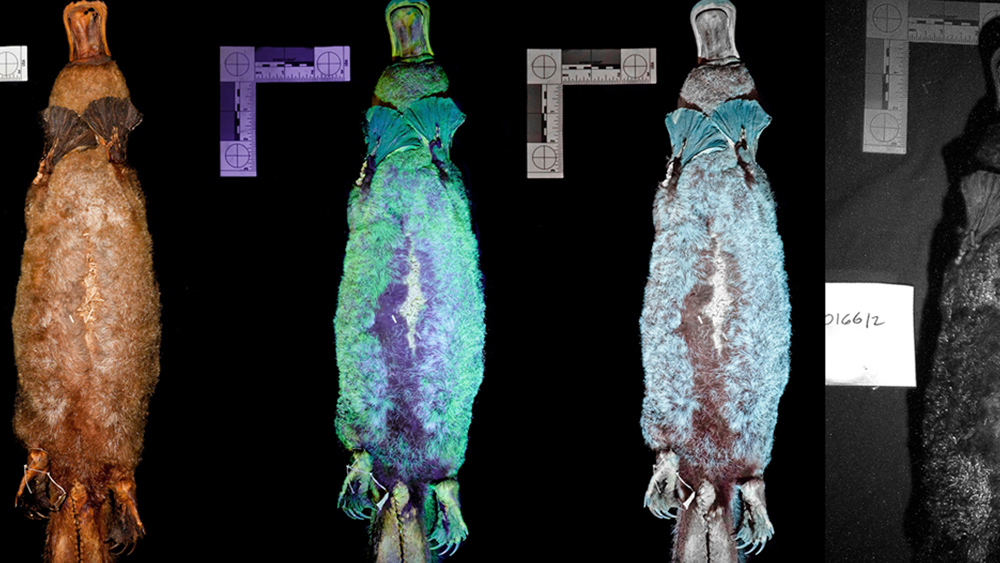
Glow-in-the-Dark Platypuses Illuminate the Creator
The Latest
Was a Key to Photosynthesis Evolution Discovered?
Northern Canadian lakes were the source of recently discovered unique photosynthetic bacteria of the phylum Chloroflexota. After years of culturing,...
CREATION PODCAST
Four Moons That Indicate a Young Universe | The Creation Podcast:...
Earth has one moon, but Jupiter has many! What can we learn from our celestial neighbor's satellites? Do they indicate youth?
Host...
Creation Kids: Seeds and Sprouts
by Renée Dusseau and Susan Windsor*
You're never too young to be a creation scientist and explore our Creator's world. Kids, discover...
APOLOGETICS
Christ’s Creativity in Canyon Critters
Grand Canyon animals display many marvelous traits and behaviors as they live life in that harsh habitat. These canyon creatures succeed thanks to the...
Standing Against False Science
I’m Michael Stamp, and I’m in my 12th year as an editor at the Institute for Creation Research. It’s always an encouragement to see...
Oysters and Pre-Flood Longevity
The oyster species Crassostrea virginica, also known as the eastern oyster, is a prized seafood. Research has demonstrated that a fossil version of...
Galápagos Finches: A Case Study in Evolution or Adaptive Engineering?
A group of birds known as Darwin’s finches live in the Galápagos Islands, which are located in the Pacific Ocean 600 miles west of Ecuador....
Hot Springs National Park: Hydrothermal Springs Formed By The...
Hot Springs National Park is located about an hour southwest of Little Rock in the folded Ouachita Mountains of central Arkansas. It is the second smallest...
Why Biology Needs A Theory of Biological Design—Part 2
“Based on a true story” is included by movie producers to add authenticity, importance, and a flair of anticipation. So, my account of how...
Marine Fossil Tapeworm Is Still a Tapeworm
The Flood was both sudden and rapid. The burial of creatures—including delicate plants and soft-bodied animals like jellyfish1—occasionally...














